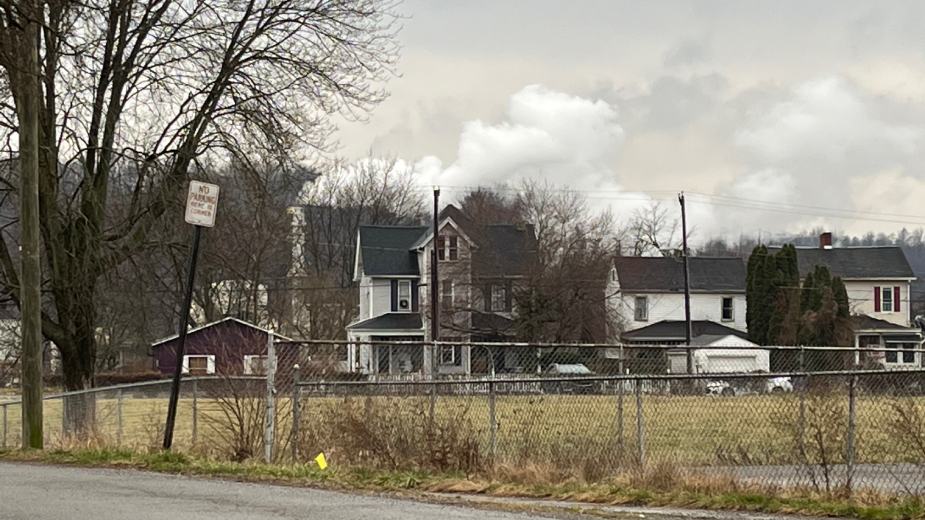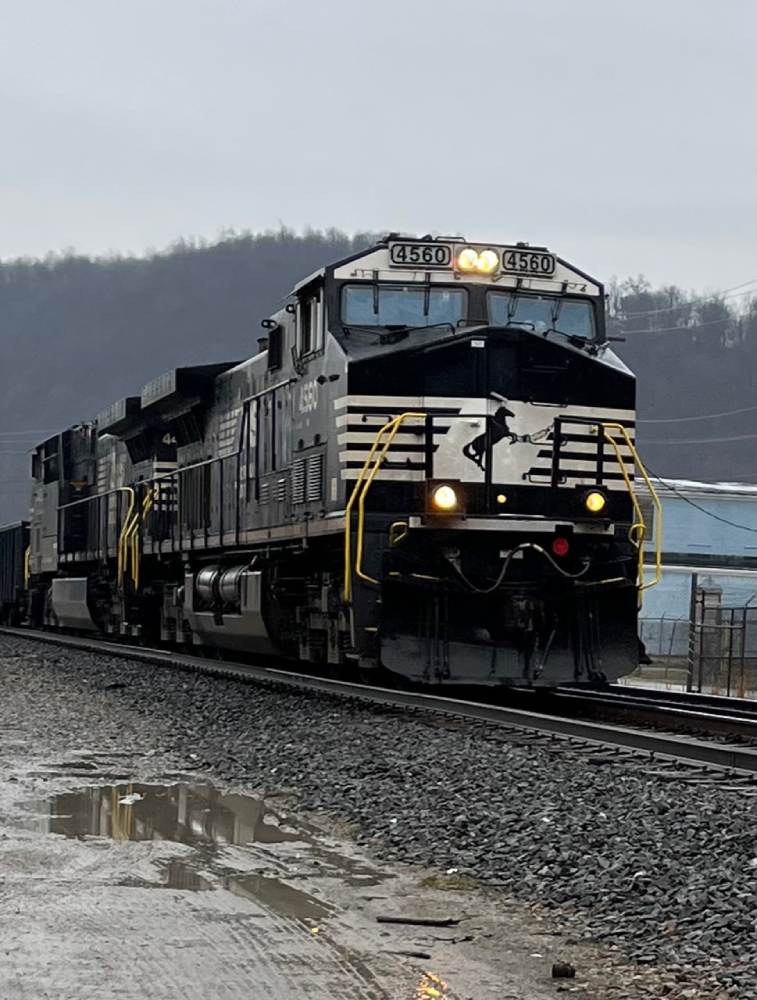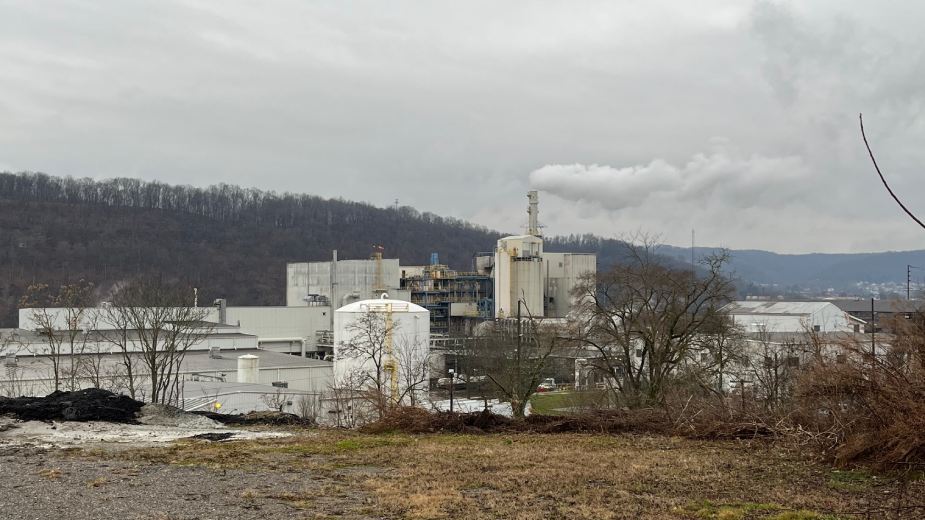Disposal of Contaminated Material at E. Liverpool Incinerator Riles Activists
EAST LIVERPOOL, Ohio – Contaminated waste from the East Palestine train derailment will be disposed of at a hazardous waste incinerator here, despite concerns by a local environmental activist group.
The waste is being taken to Heritage Thermal Services’ plant in the city’s east end. The first shipment, consisting of two 28-cubic-yard boxes of contaminated soil, arrived Monday at Heritage.
The facility has been the target of opposition by environmentalists since plans for its construction were first announced in 1982.
The leader of River Valley Organizing on Monday outlined the group’s objections to the decision to bring the waste to HTS.
“After poisoning one town in the region, Norfolk Southern and the EPA are now about to do the same to another community just down the road,” said Amanda Kiger, executive director, in a press release.
“This is completely unsafe and unacceptable, and will only widen this crisis,” she continued. “The EPA and Norfolk Southern must stop further contaminating our community.”

Kiger called for Norfolk Southern and EPA to halt the burning of waste from the train derailment at the incinerator. She said her group has advocated for stricter regulations at HTS for years, alleging the company has a “long, documented history” of health violations and of releasing dangerous toxins into the community in violation of the Clean Air Act.
A call to Mayor Greg Bricker for comment was not returned. In an interview published by another news source, Bricker said that with a 2-year-old daughter of his own, transportation of the contaminated waste to the city is a concern, but that he believes HTS is a state-of-the-art facility that can handle the materials.
His sentiments were echoed by 1st Ward City Councilman Tom Beagle, in whose ward the hazardous waste incinerator is located.
“Anything that could have an adverse effect would concern me,” Beagle said, adding that, since the company is under EPA guidance, he assumes Heritage Thermal Service’s permit allows it to incinerate the material or it would not have been accepted.
“I can only assume they’re doing the right thing,” Beagle said, adding, “There’s not a lot we can do when it’s in the federal government’s hands.”
Responding to concerns voiced by residents on social media, Beagle suggested they contact Heritage to ask if it is operating within its permit and to contact USEPA Region 5 with questions.

Beagle had worked at HTS for a brief time. “When I was there, they handled everything professionally,” he said. “I hope the people (in East Palestine) are safe. From what I am reading, everyone has been doing things by the book.”
The city’s fire department also operates the county hazmat unit, and Chief Bill Jones was asked Monday if his department or the hazmat unit has any responsibilities regarding the contaminated materials being transported through the city.
“They are not legally obligated to notify us; there’s nothing we have to do,” Jones said, adding he did not know it was being transported to the city until reading about it online.
Contacted for comment, Heritage spokesman Raymond Wayne provided a press release he said would be the company’s only response.
In the release, he said Heritage is “providing support at the site in accordance with the cleanup plan approved by government agencies.”
Materials eligible for “high-temperature destruction” will be processed at the facility, which is about 20 miles south of East Palestine.
“The facility is fully permitted to manage the materials generated by cleanup activities at the derailment site,” the release states. “HTS stands ready to do its part to help protect human health and the environment of its East Palestine neighbors.”
One of the largest hazardous waste incinerators in the world, the facility opened in 1993.
CLEANUP CONTINUES
Meanwhile, cleanup of the chemical spill at the derailment continues.
Sediment washing has begun at both Sulphur Run and Leslie Run, according to a press release from Gov. Mike DeWine’s office.
Much of the contamination remaining in these waterways is attached to the sediment in the creek beds, which is why contaminants can be seen rising to the surface of the water when the ground beneath the water is disturbed.
A private contractor has finished the first round of sediment washing, and the second round started Monday, according to the release. The process involves disturbing the sediment to release the contaminants to the surface of the water, and the contaminants are then removed from the water by vacuum trucks.
Remediation of contaminated soil and liquid from the site resumed this week after a one-day pause by the EPA over the weekend. The material is being taken to Ross Incineration Services in Grafton, Ohio, and Heritage Environmental Services in Roachdale, Indiana.
Approximately 4,832 cubic yards of contaminated soil has been been collected from the site.
Approximately 280 tons of contaminated soil were disposed of at U.S. Ecology Wayne Disposal in Michigan prior to the EPA’s short pause on waste disposal.
Additional contaminated soil at the derailment site will be collected when the process to remove the rails begins.
According to the Ohio EPA, approximately 1.8 million gallons of liquid waste have been collected from the derailment site. The calculation of 1.8 million gallons has been revised from Friday’s previous estimate of over 2 million gallons collected.
Approximately 1.249 million gallons were disposed of at Texas Molecular in Texas, prior to the EPA’s pause on waste disposal.
Another 319,002 gallons were disposed of at U.S. Ecology Romulus in Michigan, also prior to the EPA’s pause.
Approximately 94,372 gallons were disposed of at Vickery Environmental in Vickery, Ohio. This total includes liquid disposed of both before and after the EPA.
More contaminated liquid will be collected as the cleanup process progresses, according to the governor’s office.
PRIVATE WELLS
A second set of testing results from private water wells in the East Palestine area showed no harmful levels of contaminants, according to the press release.
The Columbiana County Health District on Monday received verified laboratory results from seven private water systems. Three wells showed no detectable contaminants. Four wells had trace detections of contaminants at levels well below safe drinking-water standards. There is no evidence that those trace detections are linked to the train derailment.
In total, 126 private water wells in Ohio have been tested, and results have been returned for 19 of those wells, none of which showed evidence of contaminants linked to the train derailment.
Residents near East Palestine who would like their private water systems sampled should call 330 849 3919. As test results are returned, they will be posted at columbiana-health.org/resources/.
The EPA reported that is has conducted indoor air testing at a total of 578 homes. No contaminants associated with the derailment were detected. Those living in East Palestine who have not yet requested free air sampling can call the above number.
Outdoor air monitoring is ongoing with 15 air monitors in the area. These monitors have not detected contaminants associated with the derailment, according to the release.
Final necropsy results for four deceased wild animals from the East Palestine area show no findings to support chemical toxicity as a cause of death. The Ohio Department of Natural Resources brought the animals to the Ohio Department of Agriculture’s Animal Disease Diagnostic Laboratory on Feb. 21.
Pictured at top: A plume rises from the emission stack at Heritage Thermal Services in East Liverpool, where contaminated waste from a derailed train in East Palestine will be taken.
Copyright 2024 The Business Journal, Youngstown, Ohio.



